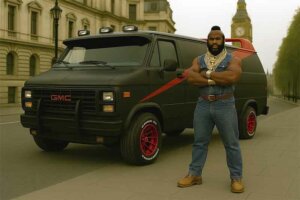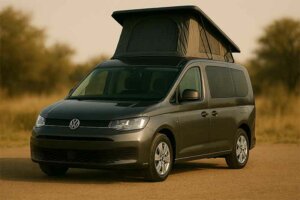Electric delivery vehicles
Electric delivery vehicles are not new; they’re nostalgic. Britain’s milk floats spent decades ghosting through dawn, clinking bottles with the smug silence of a cat. Short routes, depot charging, low speeds—EV paradise before lithium-ion learned to spell itself. They weren’t glamorous, but they proved a point: torque at zero and quiet at all times is a delivery driver’s best friend.
Fast-forward to the 2010s and the batteries finally caught up. Renault Kangoo Z.E. put plumbers and florists on electrons without drama. Nissan’s e-NV200 did similar with Japanese sensibility. DHL, bored of waiting, built StreetScooter to electrify its own rounds. Meanwhile, software turned fleets into orchestras: route optimization, state-of-charge smarts, predictive maintenance. Vans stopped being isolated assets and became nodes in a network.
Scale landed when the big badges weighed in. Ford’s E-Transit said “right, let’s do this” with payloads and ranges that made sense. Mercedes’ eSprinter made Teutonic promises about uptime and delivered. GM spun up BrightDrop; its Zevo 600 turned concept slides into actual parcels. China flooded the zone with options—SAIC Maxus, BYD—proving price could be a feature not a flaw.
Drivers discovered that EV vans are nicer places to work. Less noise, less vibration, fewer fumes, fewer pad changes thanks to regen. Managers discovered total cost of ownership charts that no longer required apology. Cities discovered that dawn deliveries don’t have to sound like a cutlery drawer falling down the stairs.
Challenges remain. Cold weather and heavy loads make range estimates sweat. Public chargers can be moody. Charging depots need space, power, and planning permission—three things urban planners never have enough of. But the curve points one way: chemistry improves, infrastructure expands, and incentives multiply.
The crucial win is behavioural. Quiet vans get permission to deliver later and earlier without inciting pitchforks. Low-emission zones stop being punitive and start being invitations. Suddenly, the oldest truths in van land—predictability, uptime, efficiency—align with the quiet revolution under the floor.
From milk floats to megawatts, the story is continuity, not disruption. Electric vans didn’t arrive to overthrow the van. They arrived to make the van better at its core job: being a dependable room that moves, preferably without turning the air brown.
do you have a van to sell? we buy vans







